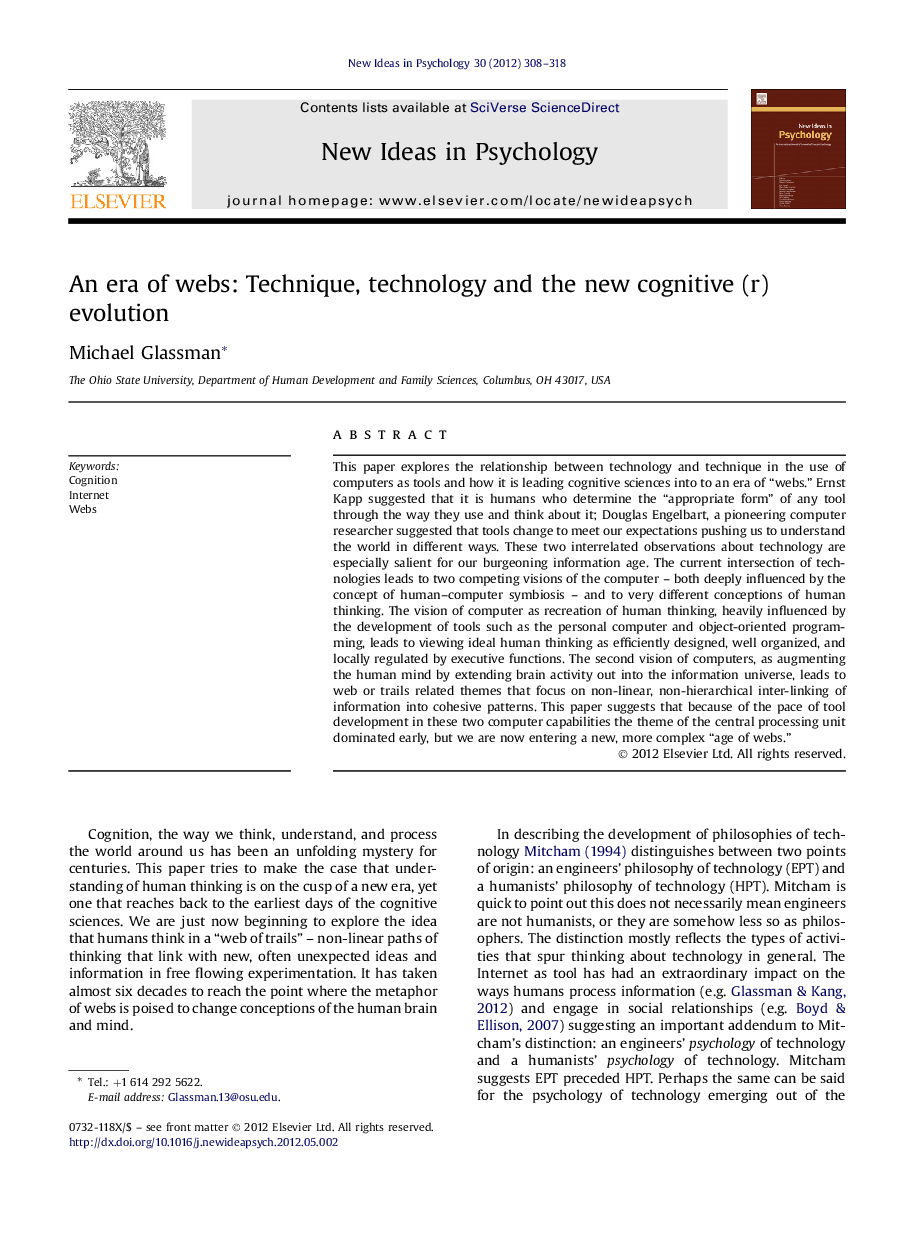| Article ID | Journal | Published Year | Pages | File Type |
|---|---|---|---|---|
| 6811075 | New Ideas in Psychology | 2012 | 11 Pages |
Abstract
This paper explores the relationship between technology and technique in the use of computers as tools and how it is leading cognitive sciences into to an era of “webs.” Ernst Kapp suggested that it is humans who determine the “appropriate form” of any tool through the way they use and think about it; Douglas Engelbart, a pioneering computer researcher suggested that tools change to meet our expectations pushing us to understand the world in different ways. These two interrelated observations about technology are especially salient for our burgeoning information age. The current intersection of technologies leads to two competing visions of the computer - both deeply influenced by the concept of human-computer symbiosis - and to very different conceptions of human thinking. The vision of computer as recreation of human thinking, heavily influenced by the development of tools such as the personal computer and object-oriented programming, leads to viewing ideal human thinking as efficiently designed, well organized, and locally regulated by executive functions. The second vision of computers, as augmenting the human mind by extending brain activity out into the information universe, leads to web or trails related themes that focus on non-linear, non-hierarchical inter-linking of information into cohesive patterns. This paper suggests that because of the pace of tool development in these two computer capabilities the theme of the central processing unit dominated early, but we are now entering a new, more complex “age of webs.”
Related Topics
Social Sciences and Humanities
Psychology
Developmental and Educational Psychology
Authors
Michael Glassman,
